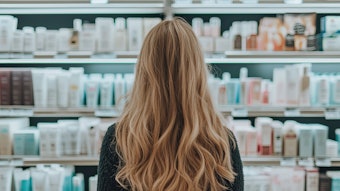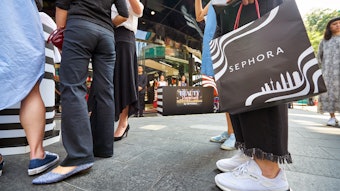Beauty-conscious consumers worldwide splurged roughly the equivalent of $4.6 billion per month on color cosmetics in 2012. That was approximately half the amount spent on skin care, according to data from Euromonitor International. Consumers could be forgiven for thinking the disparity is narrower though. Cosmetic brands, in particular, have been falling over one another in pursuit of multitasking beauty solutions, especially in cash-strapped developed markets. When purse strings are tight, consumers want more bang for their buck. As a result, it has become increasingly difficult to differentiate between categories.
Brands in the color cosmetics category have taken to this challenge more fervently than those in other categories, with multifunctionality dominating brand owners’ strategic thinking. There are now more brands boasting BB (beauty balm) benefits than you can shake a stick at, for example. And BB products are the flag bearers of multifunctionality.
In Western Europe and North America, the beauty market has become so flooded with functionality that it is not only hard for consumers to differentiate between categories but also, in many instances, to understand what a brand actually purports to do. BB products, and the way they have evolved, are prime instigators of this confusion.
Bucking the Trend in Advanced Economies
Love them or loathe them, multitasking brands have helped the color cosmetics category not only stay afloat in developed markets post-2008 but also prosper. This is no mean achievement given that a squeeze on discretionary spending ought (logically) to lead to a slow down in demand for non-essential products.
Indeed, the color cosmetics category seems to have a knack of bucking the trend in austerity-hit markets. Nail polish has been critical to the growth story too. But, just like BB creams, growth has not all been about the emerging markets, actually far from it. In the U.S., compound annual growth in nail polish retail expenditure ran at 17% over the 2007–2012 period, for example. The U.K., Germany, Italy and France were also among the top 10 growth markets in absolute terms, according to data from Euromonitor International.
The strong performance of developed markets helped push the global retail value of nail polish to more than $45 billion in 2012, compared with less than $3 billion only five years prior. What seems to have happened is that women in Western markets have rediscovered nail polish as a must-have fashion accessory, and one that is positioned at accessible price points.
The fashion for nail care first became visible in away-from-home salons. In the U.S. and the U.K., express nail bars opened 10 to a dozen. And this was tied up with a new type of pampering culture for tougher times, whereby consumers showed a propensity to spend money on morale boosters and pick-me-ups, even though they were cutting back on almost everything else.
Venezuela, Argentina, India and Russia are also key emerging growth stories for nail care products, based on data from Euromonitor International. China is absent from this list, but, in the wider color cosmetics picture, China is integral to global forecast growth. The difference between China and its fellow BRICs is that nail polish culture is still largely undeveloped. This points to an untapped opportunity over the longer term. But, for the moment at least, China is a market still dominated by lipstick and foundation/concealers.
The full article is available from GCI.










